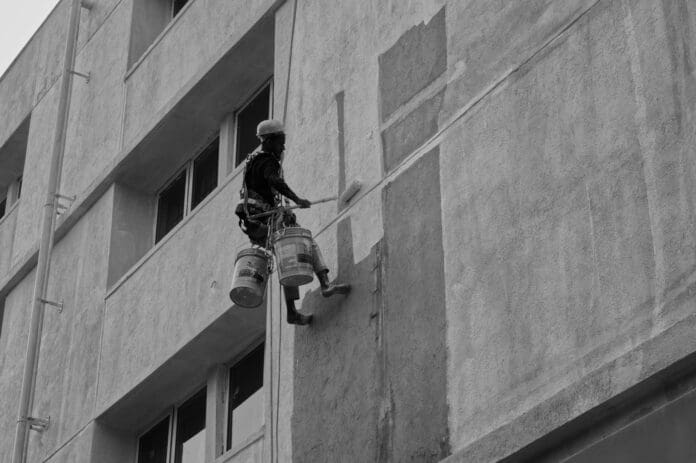This post is also available in:
 עברית (Hebrew)
עברית (Hebrew)
A newly developed paint is redefining passive cooling with a unique approach that mimics the way humans sweat to shed heat. Named CCP-30, this cement-based innovative coating leverages a combination of reflective, radiative, and evaporative cooling to significantly reduce building temperatures—without using any electricity.
According to TechXplore, at the core of CCP-30’s performance is a specialized porous structure based on a calcium silicate hydrate (C-S-H) gel network. This composition enables the paint to reflect 88–92% of incoming sunlight, emit 95% of heat as infrared radiation, and retain about 30% of its own weight in water. The result is a powerful, multi-mechanism cooling solution that operates effectively across a range of climates.
CCP-30 introduces evaporative cooling, meaning that the paint doesn’t just radiate heat away—it actively removes it by using stored water to absorb thermal energy as it evaporates. This mechanism offers significant advantages in humid and densely built urban environments where traditional radiative cooling tends to underperform.
Field testing in Singapore’s tropical climate demonstrated the paint’s potential, showing it delivers up to 10 times more cooling power than commercial alternatives. Buildings coated with CCP-30 reported 30–40% savings in electricity consumption due to reduced reliance on air conditioning. Additionally, lifecycle analysis showed a 28% lower carbon footprint per functional unit compared to conventional white paint.
Another standout feature is CCP-30’s self-replenishing capability. It can absorb moisture from rainfall or humidity, allowing continuous evaporative cooling without compromising its optical properties—even when wet.
As cities worldwide grapple with rising temperatures and increasing energy demands, technologies like CCP-30 highlight the potential of passive solutions to reshape urban cooling strategies. By merging material science with climate-responsive design, this next-generation paint offers a low-cost, durable, and scalable alternative to conventional cooling systems—paving the way for more sustainable and resilient built environments.
The paper was published in Science.

























